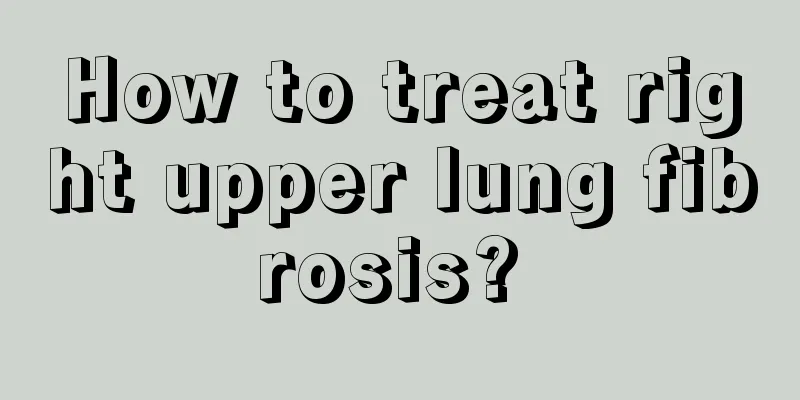What are the best ways to relieve pain from hemorrhoids?

|
There are many reasons for the formation of hemorrhoids, such as eating too much or often holding back from going to the toilet, taking too long to go to the toilet, etc. These habits may cause hemorrhoids. People who often stand or sit are more likely to suffer from hemorrhoids due to the pressure of gravity. If you want to relieve the pain quickly, you can use warm water to wash, or use some medicines to achieve a certain effect. Causes of hemorrhoids Varicose veins (15%): Hemorrhoids are caused by varicose veins under the mucosa of the rectum and anal canal. Constipation and holding the breath during defecation often cause hemorrhoids and bloody stools. These have long been recognized as important causes of hemorrhoids, because dry and hard stools and holding the breath can cause obstruction of hemorrhoidal venous return and dilation. Increased anal cushion pressure (15%): Anal vascular cushions are a type of tissue cushion located between the anal canal and rectum, referred to as "anal cushions". They are an anatomical phenomenon that exists after birth and are composed of three parts: ① Veins, or venous sinuses; ② Connective tissue; ③Treitz muscle: This muscle refers to the smooth muscle between the anal lining and the internal sphincter of the anal canal. It has the function of fixing the anal cushions. Under normal circumstances, the anal cushions are loosely attached to the muscle wall and retract into the anal canal after defecation due to their own fiber contraction. Anal cushion pressure measurement shows that the basal pressure of patients with internal hemorrhoids is significantly higher than that of the control group. The increase in basal pressure is related to the increase in vascular cushion pressure. The increased sphincter activity can cause increased anal canal pressure and the formation of internal hemorrhoids. Sun (1990) proposed that the increase in anal canal resistance in patients with internal hemorrhoids is related to the congestion of the hemorrhoids themselves, and is not necessarily accompanied by an increase in anal canal muscle tension. This view proves the correctness of the treatment methods of injection, ligation, electrocoagulation or surgical resection to reduce vascular blocks. The method of internal sphincter incision or strong anal dilation to reduce sphincter tension is worth exploring, because when the pressure in the anal cushion increases, it is when the defecation action is exerted, and the sphincter is relaxed rather than contracted. Anal cushion descent (15%): Hemorrhoids are the result of the degeneration of the supporting tissue of the anal canal, which causes part of the mucosa and submucosal tissue to move downward. They are composed of smooth muscle, collagen fibers and elastic connective tissue, which can enable the anal canal mucosa to adapt to changes in the size of the intestinal cavity and play an important role in assisting in closing the anus and maintaining anal continence. Degenerative changes in the connective tissue and excessive force during defecation can cause the anal cushions to move downward and cause hemorrhoidal symptoms. Once the anal cushions sag, it will inevitably lead to obstruction of hemorrhoidal venous return and congestion and edema of the hemorrhoids. The degree of congestion of the anal cushions is not only affected by anal canal pressure such as constipation and pregnancy, but is also related to hormones, biochemical factors and emotions. Angiogenesis (10%): The submucosal tissue of the anus is very thick, consisting of a large number of blood vessels, smooth muscles, elastic fibers and connective tissue. It acts like an annular air cushion, helping to close the anus when the sphincter contracts. When the blood vessels therein proliferate and expand to become abnormally enlarged, hemorrhoids can form. However, from a tissue morphological point of view, there is still insufficient evidence to support the theory of angiogenesis. Anal stenosis (10%): The sphincter cannot relax fully, which promotes defecation by increasing abdominal pressure. This can cause congestion of the hemorrhoidal veins and lead to internal hemorrhoids, and increase the shear force on the anal cushions to move them downward. The theoretical basis of anal dilation therapy is the theory of anal stenosis. Although it has achieved certain clinical therapeutic effects, this theory cannot explain all the problems of hemorrhoids. Vascular disease (10%): It is known that venous dilation and obstruction of venous blood return are the causes of hemorrhoids. Therefore, various factors that increase venous pressure, such as increased intra-abdominal pressure, upright position or damage to blood vessel walls, are all related to the occurrence of hemorrhoids. None of the above can fully explain the occurrence of hemorrhoids. Therefore, the occurrence of hemorrhoids may be the result of the combined action of multiple factors, or it may be that hemorrhoids are multi-sourced in their occurrence. Pathogenesis 1. Pathology Hemorrhoids are masses of varicose veins covered with mucosa that protrude toward the lower end of the rectum and the surface of the anal canal. The protruding part is also called hemorrhoidal mass. Its surface is dark red or purple-red and is closely connected to the anal sphincter by spongy tissue. Inside it are tortuous small arteries and varicose venous plexus with thin walls. Thrombosis often occurs in the dilated veins, and arteriovenous fistulas are sometimes found. Acute and chronic inflammation are seen locally. The surface of internal hemorrhoids is columnar epithelium, and the surface of external hemorrhoids is squamous epithelium. 2. Classification Hemorrhoids are usually divided into three categories based on the dentate line. (1) Internal hemorrhoids: They are located above the dentate line, covered with mucosa, and are formed by the expansion of the internal hemorrhoidal venous plexus. They are commonly found on the left side of the lower end of the rectum, in the right front and in the right back. Initially, the internal hemorrhoids protrude into the intestinal cavity, and over time they can gradually protrude outside the anus, manifesting as blood in the stool and prolapse. According to the clinical manifestations of internal hemorrhoids, they can be divided into non-prolapsed internal hemorrhoids, external prolapsed internal hemorrhoids and incarcerated hemorrhoids. If the internal hemorrhoids prolapse in a ring shape, they are also called annular hemorrhoids. (2) External hemorrhoids: They are located below the dentate line, covered by the skin, and formed by the external hemorrhoidal venous plexus. They can be divided into thrombosed external hemorrhoids, connective tissue external hemorrhoids (skin tags), varicose external hemorrhoids, and inflammatory external hemorrhoids. (3) Mixed hemorrhoids: Located near the dentate line, they are covered by the skin-mucosal junction tissue and are formed by the anastomosis of the internal hemorrhoidal vein and the external hemorrhoidal venous plexus. They have the characteristics of both internal and external hemorrhoids. The correct way to get rid of hemorrhoids: Avoid sitting for long periods of time to reduce the risk of hemorrhoids. You can do more anal exercises, that is, take a deep breath and then contract the anus; Do it for about 20 minutes every day. Use some Chinese medicine in combination to improve the condition through body regulation. For example, you can take Chinese medicine such as burdock, honeysuckle, and coptis chinensis. If you apply Zichuan ointment on the hemorrhoids, they will heal quickly. Avoid spicy and greasy food, eat more fruits and vegetables, keep bowel movements smooth, and keep the anal area clean and clean frequently. Some precautions during hemorrhoid treatment are listed below: Avoid drinking alcohol: Drinking alcohol can cause congestion and dilation of hemorrhoidal veins and swelling of hemorrhoids. Avoid spicy food: Eating spicy food such as peppers, garlic, ginger, etc. can cause hemorrhoids to become congested, thereby aggravating the pain. Avoid overeating: Overeating and eating too much will increase the severity of hemorrhoids. Avoid sitting for a long time: Sitting for a long time without exercise will hinder the blood circulation in the waist and buttocks, and aggravate the condition of hemorrhoids. Avoid tightening the waist: binding the waist too tightly will hinder the blood return to the abdominal cavity and anus, affect the normal peristalsis of the intestines, and cause pain during defecation. Avoid holding back bowel movements: If feces stay in the intestines for too long, excessive water will be absorbed and the stool will become dry and hard, causing difficulty in defecation, increased abdominal pressure, and hemorrhoidal bleeding. |
<<: Can I use enema if I have hemorrhoids?
>>: Is pp powder good for treating hemorrhoids?
Recommend
Does freezing point hair removal have side effects? The truth is this
The beginning of spring has passed, and summer is...
Is it good to take folic acid when preparing for pregnancy?
Before preparing for pregnancy, both men and wome...
What ointment is best for itchy asshole
There are many reasons for anal itching, and diff...
How to do a pedicure
People should be familiar with pedicure, which is...
The 8 main culprits of excessive heavy metals
1. Seafood 2. Certain Chinese medicines Cinnabar ...
How to remove odor from a new refrigerator
Refrigerators are household appliances that every...
What are the nursing methods for nasopharyngeal carcinoma
We should pay attention to the development of nas...
How is the chest pain caused by lung cancer?
What does lung cancer chest pain feel like? 1. Th...
What causes frequent urination? Different causes for different people
Frequent urination is an extremely common problem...
Are aluminum alloy pots harmful to the body?
Modern people's cooking technology is very ad...
Latex mattress allergy
Modern people pay more and more attention to heal...
Is it better to take a walk before or after a meal?
Walking is a very effective way to lose weight an...
Weight gain in the early stages of exercise weight loss
Nowadays, losing weight has become a hot topic. I...
Drugs that lower alanine aminotransferase
Do you know something about transaminase? This dr...
Is cerebral vasospasm serious?
The importance of physical health cannot be overs...









